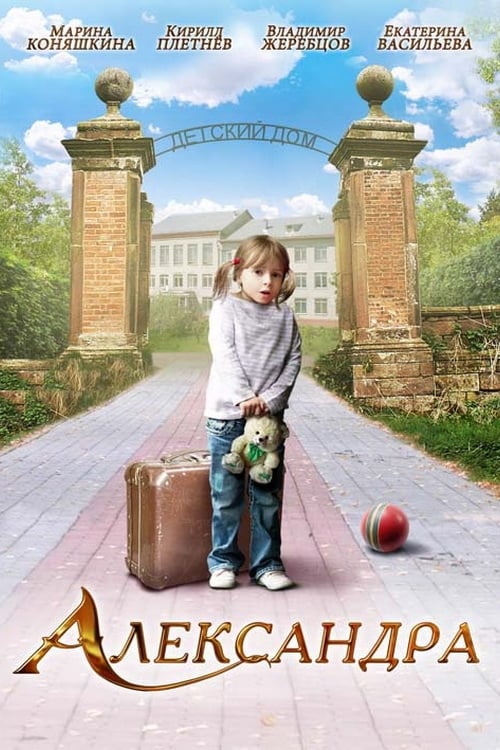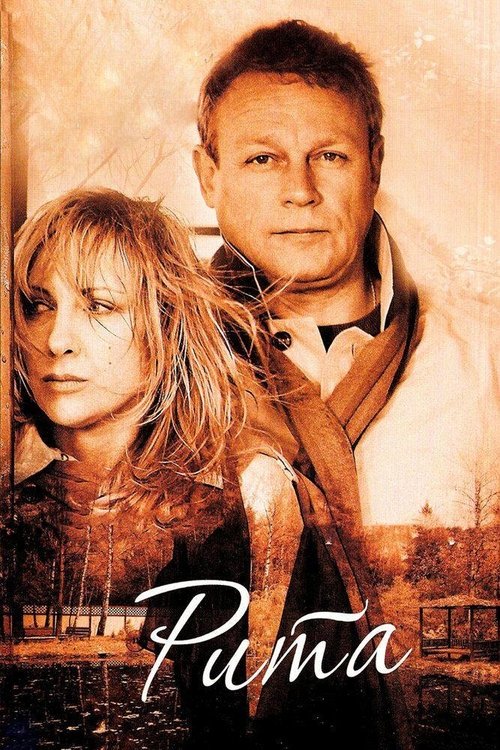
Ask Your Own Question
What is the plot?
The film "Once There Was Love" (2012) opens in a modest, middle-class Russian home around the time of Nadya Anofrinko's birth, approximately twelve years before the story's present timeline. Anya Anofrinko, a young mother, and Zhenya Anofrinko, her equally young husband, cradle their newborn daughter with a fragile hopefulness that belies the storm gathering on their horizon. The camera lingers on the quiet domesticity of their home, a symbol of their initial stability and dreams for the future, yet the atmosphere carries an undercurrent of tension that foreshadows the slow unraveling to come.
As the years pass, the narrative follows the Anofrinko family's gradual disintegration, marked by the increasing pressures that strain their bonds. Zhenya's life takes a dark turn when he becomes involved in circumstances that lead to his imprisonment. The film does not dramatize this event with a single explosive moment but rather unfolds it as a slow, inevitable collapse. The prison, a stark and cold environment, becomes a grim new setting that contrasts sharply with the warmth of the family home. Zhenya's incarceration is a pivotal moment, severing the family's unity and thrusting Anya into the role of a single mother struggling to hold their fragile world together.
Anya's emotional journey is portrayed with raw intimacy. The camera captures her exhaustion and resilience as she navigates the challenges of raising Nadya alone, the absence of Zhenya a constant shadow. The film's pacing allows viewers to feel the weight of each passing year, the small fractures in their lives accumulating into a profound sense of loss and disconnection. Nadya grows up in this fractured environment, her childhood marked by the absence of her father and the palpable tension between her parents.
Throughout the film, there are no dramatic deaths or violent confrontations. Instead, the tension is internal and psychological, rooted in the emotional and social consequences of Zhenya's imprisonment. The family home, once a place of hope, becomes a site of quiet despair. Anya's struggles are compounded by the social stigma and financial hardships that come with being a single mother in their community.
The film's revelations are subtle rather than shocking. There are no hidden secrets or sudden twists; the tragedy lies in the everyday reality of a family slowly falling apart. The audience witnesses the erosion of love and trust, the gradual fading of dreams once held dear. Dialogue is sparse but meaningful, often conveying more through silence and glances than words. For example, a poignant moment occurs when Anya looks at Nadya and quietly says, "We have to keep going, for her," encapsulating her determination amidst despair.
As the story moves toward its conclusion, the focus remains on the emotional toll rather than a climactic event. The final scenes depict Anya and Nadya continuing their lives without Zhenya, the father's absence a permanent void. The camera lingers on their faces, capturing the resilience and sorrow etched into their expressions. The family home, once vibrant, now feels hollowed out, a visual metaphor for the family's fragmentation.
The film ends on a somber note, emphasizing the ongoing nature of their struggles rather than offering resolution or redemption. The slow disintegration of the Anofrinko family is complete, not with a dramatic finale but with the quiet persistence of survival amid loss. The viewer is left with a haunting portrait of love that once was, now a fragile memory overshadowed by hardship and separation.
In summary, "Once There Was Love" is a stark, intimate portrayal of a young Russian family's decline over twelve years. It traces the impact of Zhenya Anofrinko's imprisonment on Anya and their daughter Nadya, focusing on the emotional and social consequences rather than dramatic plot twists or deaths. The film's power lies in its realistic depiction of a family slowly coming apart at the edges, ending with a poignant, unresolved depiction of their fractured lives.
What is the ending?
In the ending of "Once There Was a Love," the main characters confront their pasts and the choices they have made. The film culminates in a poignant moment of realization and acceptance, leading to a bittersweet resolution for each character.
As the story unfolds in the final scenes, we see the protagonist, a woman named Anna, standing at a crossroads in her life. She has been grappling with her feelings for her estranged partner, Mark, and the emotional turmoil that has defined their relationship. The tension between them reaches a peak as they finally confront each other about their unresolved issues.
In a quiet, intimate setting, Anna and Mark sit across from each other, the weight of their shared history palpable in the air. Anna's eyes are filled with a mix of sadness and determination as she speaks about the love they once shared and the pain that has lingered since their separation. Mark, visibly affected, struggles to articulate his feelings, revealing his own regrets and the longing he has felt for Anna.
As they talk, the camera captures the subtle shifts in their expressions, the flicker of hope intertwined with the shadows of their past mistakes. The conversation becomes a cathartic release, allowing both characters to express their vulnerabilities. They acknowledge the love that still exists between them, but also the reality that they have both changed and grown apart.
In a moment of clarity, Anna realizes that holding onto the past may not be the answer. She stands up, taking a deep breath, and walks away from the table, symbolizing her decision to move forward with her life. Mark watches her go, a mixture of sorrow and understanding on his face. He knows that this is a turning point for both of them.
The film concludes with Anna stepping out into the sunlight, a metaphor for new beginnings. She walks away with a sense of purpose, ready to embrace whatever comes next. Mark remains behind, reflecting on their conversation, and though he is left alone, there is a sense of acceptance in his demeanor. He understands that love can take many forms, and sometimes letting go is the most loving act of all.
In the final moments, the screen fades to black, leaving the audience with a lingering sense of hope and the bittersweet nature of love and loss. Each character has faced their truths, and while their paths may diverge, the impact of their love story remains etched in their hearts.
Is there a post-credit scene?
In the movie "Once There Was a Love," there is no post-credit scene. The film concludes its narrative without any additional scenes or content after the credits roll. The story wraps up the emotional arcs of the characters, leaving the audience with a sense of closure regarding their journeys and relationships. The focus remains on the themes of love, loss, and the complexities of human connections, which are fully explored within the main storyline.
What role does the setting play in the development of the story?
The setting, a quaint yet melancholic town, mirrors the protagonist's emotional state, with its picturesque landscapes contrasting the internal struggles of the characters, enhancing the themes of love and loss.
How do the supporting characters influence the main character's journey?
Supporting characters, such as the wise mentor and the skeptical friend, provide contrasting perspectives that challenge the protagonist's beliefs about love, ultimately guiding them toward self-discovery and acceptance.
What is the significance of the letter that the main character receives?
The letter serves as a catalyst for the protagonist's journey, revealing hidden truths about their past and igniting a longing for connection that drives the narrative forward.
How does the relationship between the main character and their love interest evolve throughout the film?
Initially marked by misunderstandings and emotional distance, their relationship deepens as they confront their fears and vulnerabilities, leading to moments of intimacy and conflict that shape their bond.
What internal conflicts does the main character face throughout the film?
The main character grapples with feelings of inadequacy and fear of vulnerability, which manifest in their hesitance to fully embrace love, creating a poignant tension that drives their character arc.
Is this family friendly?
"Once There Was a Love," produced in 2012, is a film that explores complex emotional themes and relationships. While it may not be overtly graphic, there are several aspects that could be considered potentially objectionable or upsetting for children or sensitive viewers:
-
Emotional Turmoil: The film delves into themes of heartbreak, loss, and the struggles of love, which may be intense for younger audiences to process.
-
Family Conflict: There are scenes depicting familial disagreements and tensions that could be distressing, particularly for children who may not understand the dynamics of adult relationships.
-
Depression and Loneliness: Characters experience feelings of isolation and sadness, which could resonate deeply and evoke strong emotions in sensitive viewers.
-
Romantic Struggles: The portrayal of romantic relationships includes misunderstandings and emotional pain, which might be difficult for younger viewers to comprehend fully.
-
Mature Themes: The film touches on adult themes of love and relationships that may not be suitable for a younger audience, as they require a level of maturity to understand.
Overall, while the film does not contain explicit content, its emotional depth and mature themes may not be appropriate for all children or sensitive individuals.


























